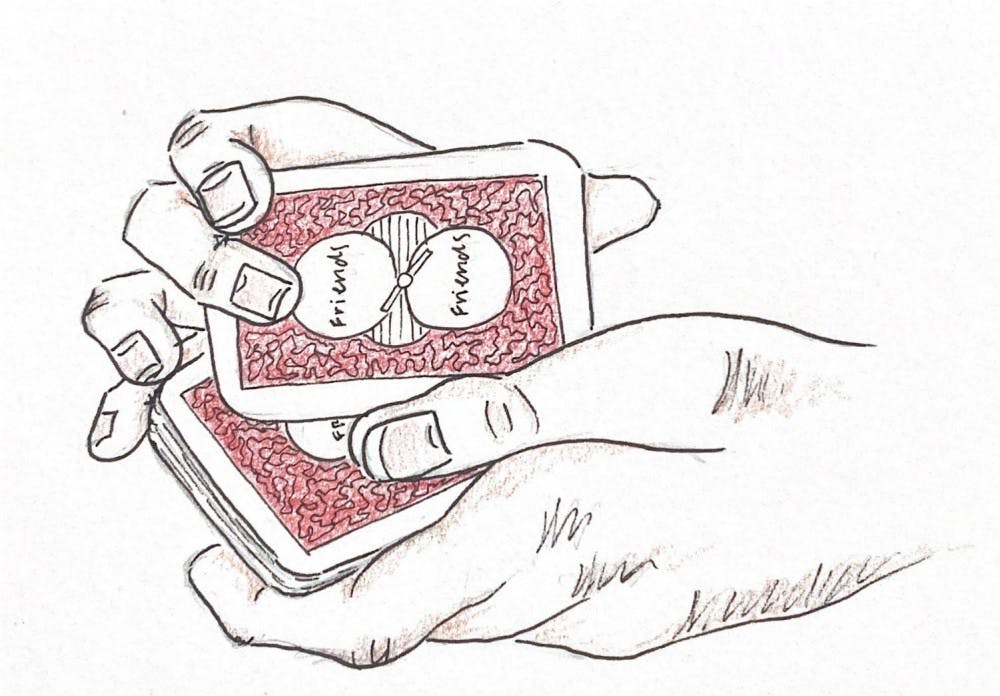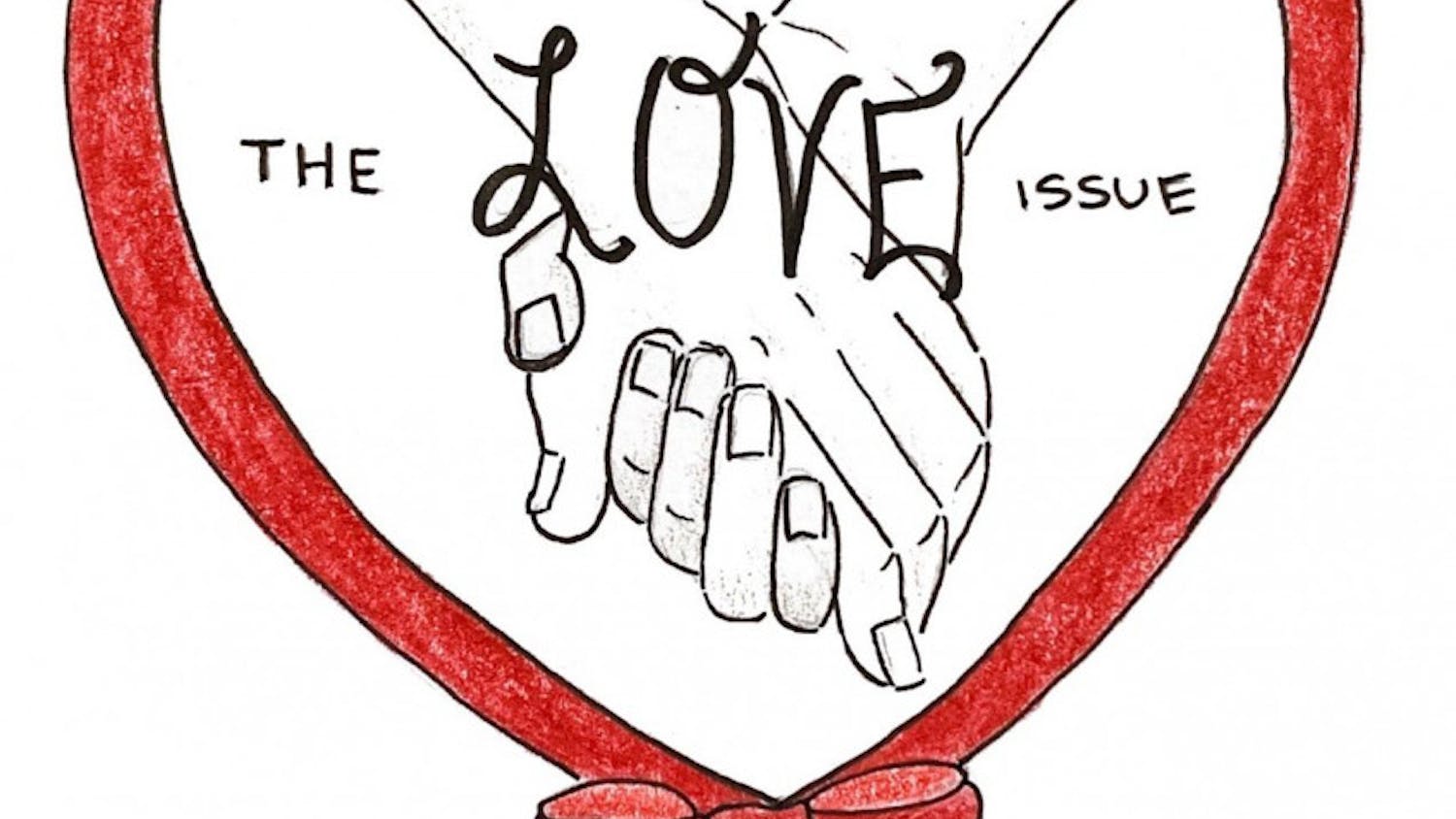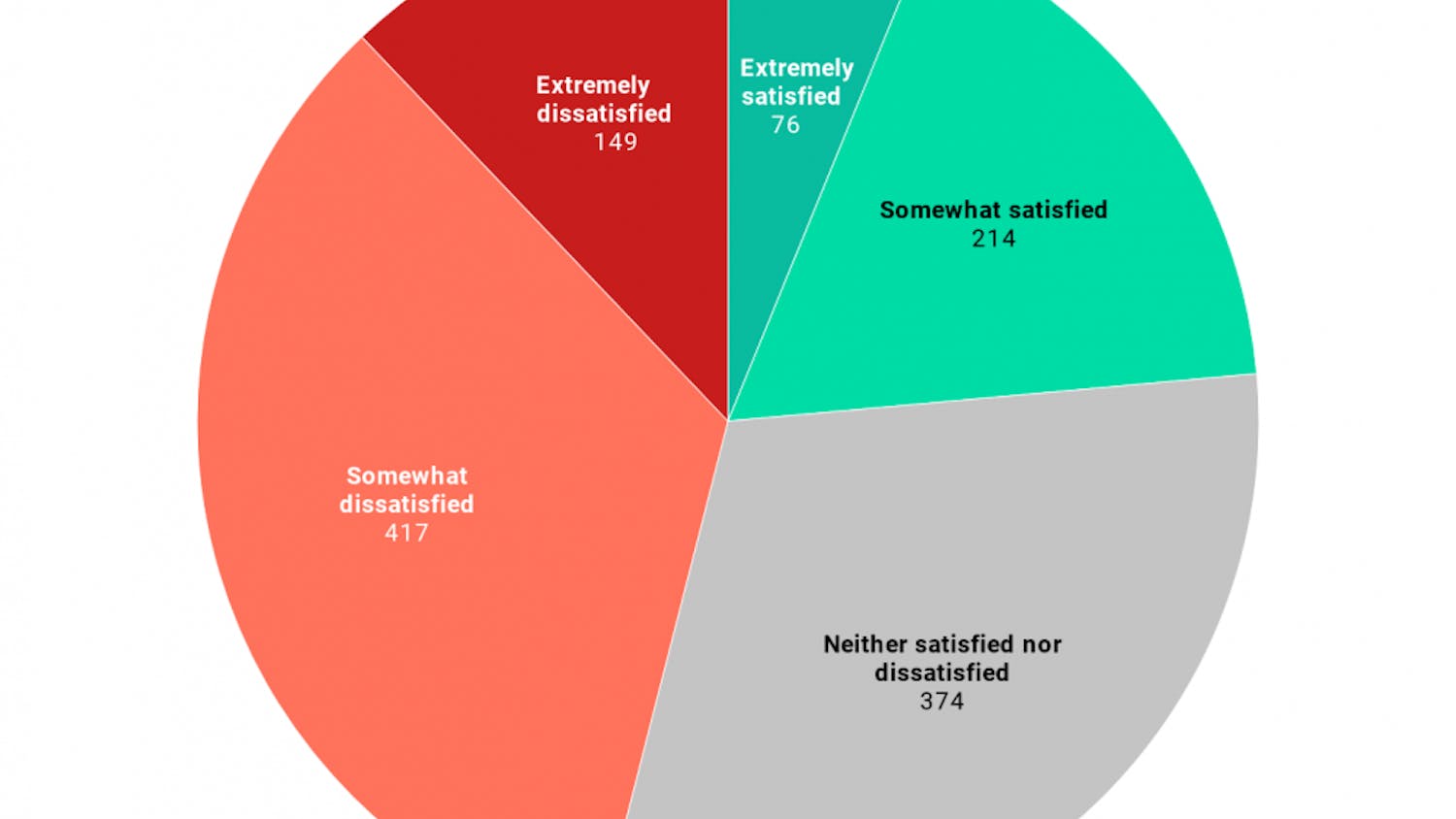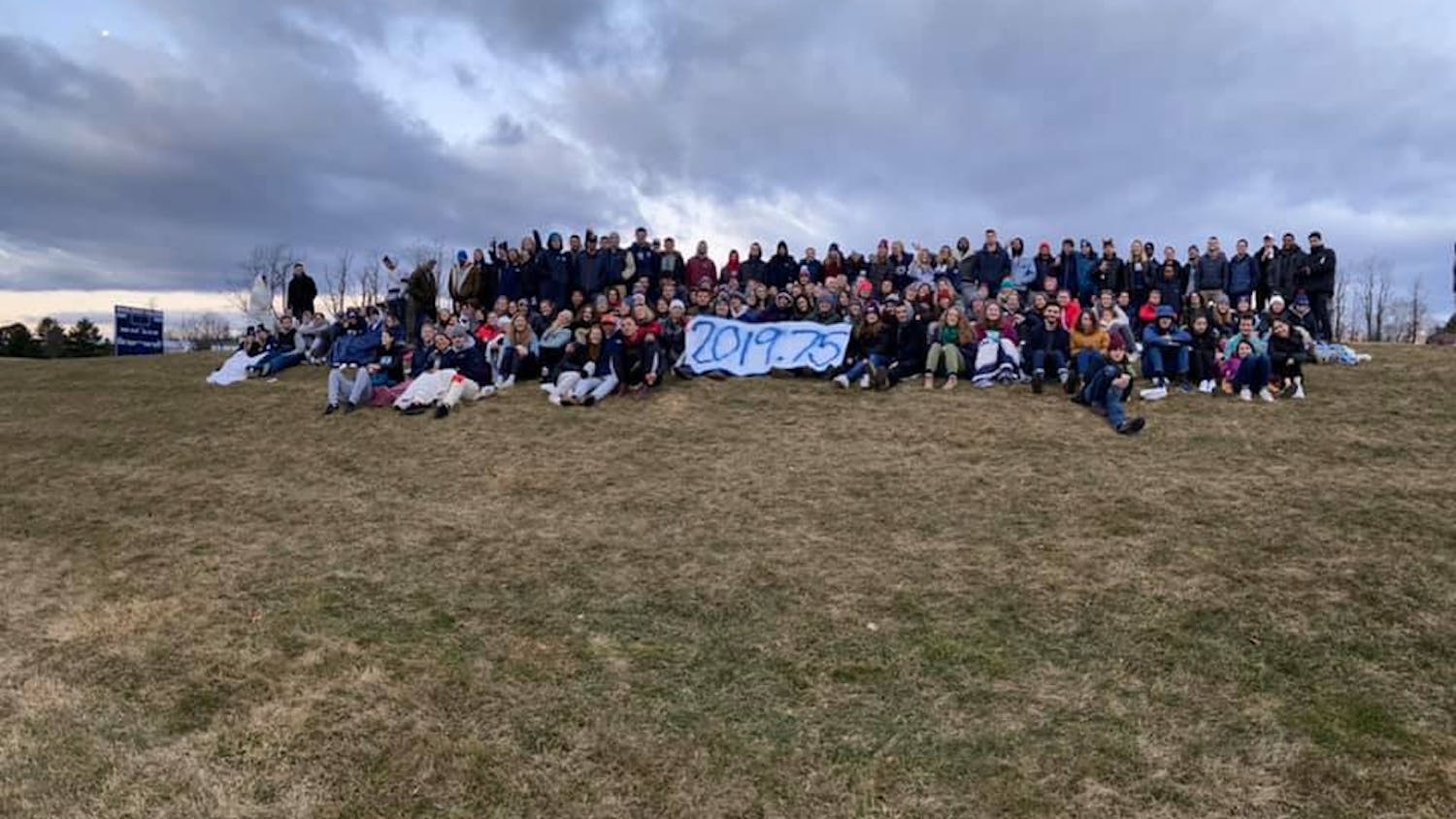
First-years’ identities are inevitably tied to the dorms they live in — Allen, Battell, Ross and Stewart — where neighbors forge friendships. These relationships, generated by proximity, often become the support systems that carry students through the transition to college life. Yet they are sometimes the least expected friendships.
Emma Wheeler ’23 and Emma McKee ’23 are hallmates in Battell. Recalling the first time they met each other over lunch, both admitted that the connection was not immediate.
“I was so uncomfortable that I’m pretty sure I didn’t speak at all,” Wheeler said. “For some reason, I had this false assumption that I wouldn’t end up being best friends with my hallmates.”
Orientation offers first-years many opportunities to interact with their hallmates through Commons-based activities. Through workshops, which are designed to build relationships and push students out of their comfort zones, first-years are often constantly around the same people.
Ella Jones '23 lives in Hadley Hall and her core group of friends consists of her roommate, suitemates and a few hallmates. She traced the roots of these friendships to her first weeks at Middlebury.
“It is just so convenient. Going down to meals with people, hanging out after class, it all becomes easier the closer together you live,” Jones said.
McKee described the pressure first-years feel to go everywhere in packs during orientation.“It’s comfortable to have a group of friends right away, even if you’re not going to stay friends with them forever, just so you feel less alone,” McKee said.
But as first-years become more integrated into the rest of the college community, they often seek ways to branch out. Clubs, classes and parties all become important vehicles for social interaction.
Wheeler and McKee both became part of the water polo team. The team gave them a passion for the sport — and a new group of friends.
“I feel a close sisterhood with my waterpolo gals and guys,” Wheeler said. “And I feel like I’ve also met so many amazing people through my water polo friends.”
While students have agency to find and choose their friends, placements of first-years in dorms and halls is arbitrary. Friends by proximity are a testament to a combination of chance and fate that becomes the perfect recipe for human relationships.
“There are so many people on campus, and I think there are a lot of people that I am compatible with enough to form a friendship,” Wheeler said. “But it takes the combination of being compatible and having a shared experience to bond over.”
Three years later
For some students, these “proximity friends” carry them through all four years of college. As a first-year, Jack Kagan ’20 lived in the basement in Allen. He was not close with the other students on his floor, but a friend from high school looped him into his floor in Hadley. The floor was close, and many of the students who lived there have remained in a tight-knit friend group.
“We all got along so well and I'll never be able to thank those people enough for being so open to me, letting me crash on their floors and their couches, and being true friends,” Kagan wrote in an email to The Campus.
For Kagan, the keys to these friendships lasting through the ups and downs of college life were openness and humor. Even when the people in his friend group do not see each other for a while, they always pick up where they left off when they get back together.
His group of friends has expanded over the years, collecting new people and remaining open to new friendships, ideas and activities.
“I think we can always have fun together and joke around together and that's when we're at our happiest. We all would be so happy to just sit in a room and talk and just laugh,” he wrote.
Kagan, who does not identify as outgoing, considers himself lucky to have found the people he now considers some of his closest friends so early on.
“I think the lesson out of this is, freshman year, you really have to push hard to leave any expectations of college at the door. You have to try not to blame yourself or anything for your situation,” he wrote. “You have to trust that it will work out if you try to do what makes you happy because you'll find those people doing the same thing.”
The Sophomore Shuffle
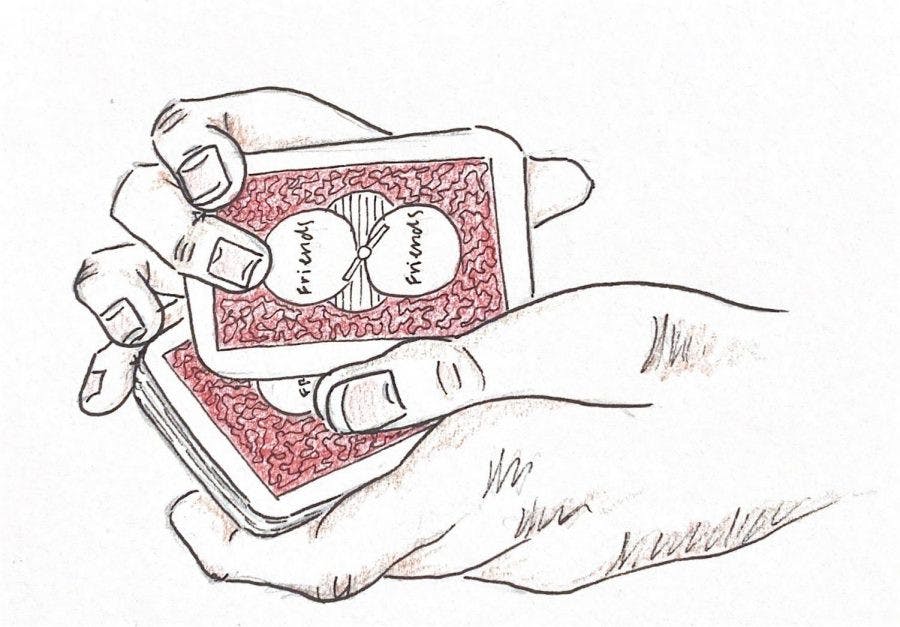
As MiddKids return to campus for their sophomore years, they often observe shifts in their friendships.
With a year of college under their belts, many sophomores discover that they have a greater sense of self-confidence and familiarity with themselves and their surroundings, as well as a better understanding of what they care about most. Daily routines adapt as they delve deeper into their academic specialties and dedicate themselves to a handful of extracurriculars. These factors can all shape the changing landscape of existing — and developing — friendships.
Gracey Carroll ’22 believes that college friendships are more fluid than commonly thought. “I think a common myth about college friendships is that you have one circle of friends,” she wrote. “I don’t know anyone who has that! I have my roommates, my Model UN friends, my Radio Theatre friends and friends from classes.”
Carroll explained that she made fewer new friends this year than she did last year and is no longer as close with some of her first-year friends. Instead, she opted to strengthen her existing relationships.
“There were a few people I was very close with last year that I don’t talk to as much anymore,” she wrote. “I think part of it was that Battell got separated into Gifford and Pearsons, but I also realized at some point that I just didn’t like some of the people I’d grown attached to.”
New activities, new friends
While first-year relationships are decided by proximity, sophomore connections are often based on common interests. Claire Moy ’22 expanded her social circles in her sophomore year while also prioritizing certain extracurriculars.
“Like a lot of MiddKids, I joined so many orgs my freshman fall that I barely had time to attend any of them,” she wrote in a message to The Campus. “This year, I dedicated more time to my extracurriculars like ISO and Riddim, took on leadership roles and was just more confident, which helped me to reach out and really get to know people.”
This increased confidence also helped her connect with her peers outside of class. “As I took higher-level courses in Economics, I found I was spending a lot more time with more of the same people,” she wrote. “It was an incentive to get to know them and hang out outside of class.”
Moy explained that, although she made several new friends this year, her main friend group from her first-year hall hasn’t changed much. “Sophomore year definitely solidified this friend group, while expanding my network to include really diverse-thinking and interesting people,” she wrote.
Justin Cooper ’22 reflected on the role of confidence in his personal relationships. Like Moy, he found that his first-year friendships strengthened after returning to campus in the fall.
“I think what really allows us to both solidify and expand our social circles in sophomore year is confidence and comfort on campus,” he wrote. “With these as the building blocks for the sentiment coming back to a now-familiar place and lifestyle, it is easier to reach out to someone you wouldn’t have before or to spend your time with your friends how you please.”
Long distance friendships
The transition to distance learning strained social life at Midd for students and clubs alike. Michael Simons ’22.5 said he finds it challenging to build and maintain connections from a distance.
“I’ve tried to keep my relationships going, but it seems hard to build new friendships over Zoom,” he wrote. “I’m not connecting as regularly because everyone has busy schedules and it’s a lot harder to plan meetings when we live in different parts of the country and have changing family and work responsibilities.”
Like many other students, Simons began to branch out from his main group of friends in his second semester. He said that while he enjoyed having a group of Febs that he could reach out to at any time, it isn’t until the fall that many Febs start to meet new people.
Simons chose to live in Weybridge House and joined the sailing team this fall in order to broaden his network of friends. He has also been a member of Community Friends since his first semester and currently serves as a community coordinator.
“Joining the coordinator team was a great way to meet a kind, sincere group of friends,” he said. “It was nice having a friend group centered around giving back to the community.”
For now, Simons is staying connected through snail mail. “Writing lots of letters and postcards to friends is the biggest thing that I’m doing to stay connected,” he wrote.
Carroll acknowledges the difficulty of constantly saying goodbye to familiar faces at the end of each semester. "Middlebury is a revolving door of new people," she wrote. "Given the Feb program and the popularity of study abroad, I always feel like I am saying goodbye to someone and hello to someone else."
However, she remains optimistic about her next two years at Middlebury. “While the constant change can be challenging, I welcome the opportunity to maximize my pool of wonderfully diverse and ever-transforming friendships!” she wrote.
Editor's Note: Jack Kagan ’20 is a sports editor for The Campus.

Emmanuel Tamrat '22 is Digital Director.
He began working for The Campus as a photographer and online editor in the fall of 2018, and previously served as senior online editor.
An Environmental Policy major, Tamrat hails from London, GB but calls Alexandria, VA home. At Middlebury, he is involved in Rethinking Economics and works as a Democracy Intiatives Intern with the CCE.

